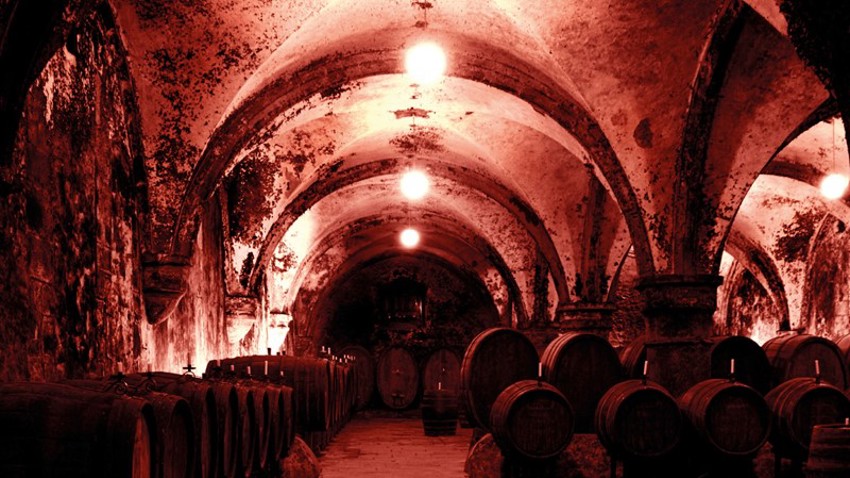
Whilst every effort is made by the winemaker to create fit and healthy bottles of wines, sometimes, things go wrong and a bottle can be off its mark. Wines like these, with ‘stage fright’, are not harmful to the consumer – however, the consumer may shy away from them in future if the problem is not rectified.
Wines can develop faults at any stage of the journey from vineyard to glass. From taint associated with rot in grapes that are not sorted out at the triage table, to heat-related problems picked up when sitting on a hot dockside in a shipping container. Sometimes the consumer may perceive a fault which may be stylistically normal; such as the oxidative qualities of sherry or a sediment thrown by an unfiltered wine.
In all cases, how the consumer is treated is of paramount importance, and understanding what the major faults are and how they might have occurred is handy information to have when addressing the, ‘my wine is corked’, situation. Tartrate Crystals may be found on the cork or seen resembling ‘broken glass’ at the bottom of the bottle; these form in unfiltered wines that may have been kept for a few hours in cold conditions, perhaps whilst in transit. A simple fix is to decant the wine, not feasible with a guest but acceptable at home, the taste is not noticeably affected.

Cork Taint is generally caused by two closely related chemicals 2,4,6 trichloroanisole, often called TCA, or 2,4,6 tribromoanisole, often referred to as TBA. These chemicals are produced by bacteria that may have been living in a piece of cork or perhaps a pipe in a winery: so even wines sealed with a screwcap might be ‘corked’. Low-levels of TCA dull a wine’s fruit character, whilst higher levels might make one think the wine smells of wet cardboard, or heaven forbid, damp dog! Nothing can be done to repair this wine – it’s worth noting that some people can detect TCA and be put off a wine with really low levels of the chemical, whilst others may barely notice, beyond the fact that it is not particularly flavoursome.
Another ‘fault’, some actually see this as a stylistic option, is often referred to as Brett. Brettanomyces, to give it its full name, is a genus of yeast; as is Saccharomyces which is employed by all winemakers to change the grape sugars into alcohol. The issue with Brett is that, whilst low-level influence adds some complexity and a savoury character that some find attractive; a high-level influence can make the wine smell of a barnyard, one with a horse in it; or a plaster, the type one might put over a cut. Too much is just too much.
If a wine is bottled with some residual sugar in it, quite common, there is always a chance of a Secondary Fermentation occurring by some rogue yeast, lactic acid bacteria or acetic acid bacteria. If the latter is involved the symptoms might be a vinegary or ethyl acetate (nail-polish remover) smell: this is generally referred to as Volatile Acidity or VA. The wine may also appear a touch cloudy and have a prickly fizz or spritz.
Whilst in transit or on a hot shelf above a radiator wine can suffer Heat Damage – usually this happens above 26 °C, it is irreversibly damaged from this point. The wine will appear cloudy and taste perhaps slightly burnt; the cork may have even been pushed out a little.

Oxidation is an issue that might be initiated by excessive heat, but can also be a result of an ill-fitting cork or bad handling in the winery. The wine, if white, will have a noticeably darker, amber or brown colour; reds show a colour change away from vibrant purple towards duller brown. There will also be sherrylike flavours or aldehyde/nutty flavours. There’s no going back to the brightness of youth here.
The chemical opposite of oxidation is Reduction, wines that suffer from reductive qualities are often bottles with not enough exposure to oxygen. The winemaker might do this with the best intention to preserve the wines fresh, fruity notes. However, wines affected might have a hint of struck match or rubber at best, and at worst show volatile sulphur compounds. Hydrogen Sulphide (rotten eggs) is perhaps the worst outcome, but the smell of disulphide and dimethyl sulphides, rotten onions and canned corn, are not far behind. Put the cork back in quickly!
Fortunately, innovations such as screwcaps and a better understanding of how to look after wine, both in and out of the winery, mean that the percentage of wine bottles showing faults are very low these days – as always the key is to make sure the customer gets a fresh glass or bottle and continues to enjoy their time in your restaurant or bar.
